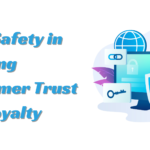Unlocking Sales with Digital Marketing: Ranking E-Commerce Products in USA
- 1 Ranking E-Commerce Products in the USA Through Digital Marketing
- 1.1 Mastering SEO for Product Pages
- 1.2 Leveraging Product Reviews and Ratings
- 1.3 Harnessing the Power of Social Media
- 1.4 Crafting Compelling Product Descriptions
- 1.5 Setting Up Pay-Per-Click Advertising
- 1.6 Investing in Influencer Marketing
- 1.7 Optimizing Product Images for Aesthetic Appeal
- 1.8 Utilizing Email Marketing for Product Promotion
- 1.9 Implementing E-commerce Content Marketing
- 1.10 Monitoring and Analyzing Performance Metrics
- 2 Conclusion
- 2.1 FAQs
- 2.1.1 How do I choose the right keywords for my product pages?
- 2.1.2 What platforms are best for showcasing products through social media?
- 2.1.3 How can I measure the effectiveness of influencer marketing campaigns?
- 2.1.4 What elements should I include in a compelling product description?
- 2.1.5 Is PPC advertising suitable for all e-commerce businesses?
- 2.1.6 How can I optimize product images for online visibility?
- 2.1.7 What are some effective strategies for email marketing in e-commerce?
- 2.1.8 How do I create engaging content beyond product catalogs?
- 2.1.9 Which performance metrics should I monitor regularly for my e-commerce business?
- 2.1.10 How often should I update my SEO strategies based on algorithm changes?
- SEO Optimization: Focus on keyword research and mobile-friendly content to improve product page rankings on SERPs.
- Social Media Engagement: Utilize platforms for showcasing products, engaging with the audience, and integrating sales features.
- Influencer Marketing and Content Creation: Collaborate with influencers and create compelling content to enhance product visibility and brand credibility.
In the competitive landscape of e-commerce, opening sales calls for an approach to digital marketing driven by a strategy. As the owner of an e-commerce enterprise, you should strive to enhance the rankings of your products on SERPs to get better visibility, eventually attracting prospective customers. This article will analyze how to make your e-commerce products visible in the USA.
Implementing these strategies can increase your online presence and drive more organic traffic to your website. Whether a small-scale business or a large enterprise, you must partner with a reliable digital marketing agency in Houston specializing in e-commerce.
Ranking E-Commerce Products in the USA Through Digital Marketing
Let’s dive into digital marketing and discover how to maximize your e-commerce success.
Mastering SEO for Product Pages
Product ranking is based on SEO. Firstly, conduct keyword research to understand better the words your audience uses when searching for your products. Ensure these keywords are incorporated in product titles, descriptions, and meta tags usefully.
Make your product pages mobile-friendly. Mobile-first content is a crucial priority for Google. Keep your product content and image up-to-date to remain new and significant.
Leveraging Product Reviews and Ratings
The influence of ratings and reviews is one of the main impacts on buying decisions. If your customers enjoy using the product, ensure that they leave a review and upload it on your product’s web page. A positive review not only creates trust but also boosts the ranking of your product in search results. Actively listen to customer feedback and address positive and negative reviews, demonstrating your commitment to customers.
Satisfaction.
Harnessing the Power of Social Media
One of the most effective ways to publicize your products is through various social media platforms, which would also help direct traffic towards your online shop. Show your products in action by posting eye-catching content. Leverage platform-specific features such as Instagram Shopping Facebook Marketplace to sell your products integrated within your social media marketing plan. First, engage your audience using giveaways, polls, and user-created content to create a supportive community for people involved in your business.
Crafting Compelling Product Descriptions
Notably, an effectively written product description for your customers can also help improve the ranking of your product pages on SERPs. Write concise, explicit, and persuasive descriptions highlighting important features and benefits. Use keywords organically, and do not overuse them. Ensure you employ a storytelling strategy that connects with your audience and thus makes your product pages memorable.
Setting Up Pay-Per-Click Advertising
PPC advertising ensures that your products are noticed by those actively searching for them to add value to their lives via search results pages. Generate compelling ad texts and maximize landing pages to ensure you get value from PPC.
Investing in Influencer Marketing
Work with influencers within your market to amplify the visibility of your products. Approach influencers whose audience reflects your target market and have them advertise your products. Truthful endorsements by influencers enable your brand to access new audiences and foster confidence in products. Track the effectiveness of influencer campaigns using a specific URL and one-of-a-kind analytics.
Optimizing Product Images for Aesthetic Appeal
One of the most critical elements in attracting online shoppers is product images. Ensure that your images are clear and present all sides of your products. Zoom in so customers can see the details. Ensuring images are a decent size will help make the most of your page load. Both routine images and professional ones promote the creation of a positive user experience, which leads to increased conversion rates.
Utilizing Email Marketing for Product Promotion
Email marketing continues to be an efficient way of promoting your e-commerce product. Make a targeted email list of customers’ personal preferences and behaviors. Add personalized product suggestions to your email marketing campaigns to boost engagement. Get your customers to click through their emails using intriguing subject lines and attractive email templates. Pay close attention to email analytics so your strategies refine and you become more effective.
Implementing E-commerce Content Marketing
Generate content marketing initiatives that reach beyond product catalogs. Add value to your audience by writing blog posts, articles, or videos. Address prevalent problems, answer FAQs, and become an industry leader. Set links to product pages from your content to enhance the traffic and SEO of e-commerce websites.
Monitoring and Analyzing Performance Metrics
Track your digital marketing activities regularly using monitoring tools. Monitor KPIs such as website traffic, conversions, and sales. A/B testing is an excellent approach to explore various strategies and determine which ones suit your audience the best. Monitor the changes in the SEO algorithm and adapt your marketing strategies accordingly.
Conclusion
A multi-dimensional digital marketing strategy is necessary for the e-commerce ranking in the USA. SEO optimization, social media engagement, and influencer support increase your products’ marketing efficiency compared to competing companies. Compounding these techniques and refining them according to performance metrics will allow you to increase sales, create a clientele base, and make your e-commerce business unique.
FAQs
How do I choose the right keywords for my product pages?
Conduct thorough keyword research using tools like Google Keyword Planner or SEMrush to identify relevant keywords with high search volume and low competition. Consider long-tail keywords that are specific to your products and align with user intent.
What platforms are best for showcasing products through social media?
Popular platforms like Instagram, Facebook, Pinterest, and TikTok are ideal for showcasing products through visually appealing content. Choose platforms based on your target audience demographics and engagement preferences.
How can I measure the effectiveness of influencer marketing campaigns?
Track key metrics such as engagement rates, website traffic generated through influencer links, conversion rates, and overall sales attributed to influencer promotions. Use unique tracking links and promo codes to attribute sales accurately.
What elements should I include in a compelling product description?
Include key product features, benefits, unique selling points, and use cases. Craft concise and persuasive descriptions that address customer pain points and highlight how the product solves them. Incorporate relevant keywords naturally for SEO.
Is PPC advertising suitable for all e-commerce businesses?
PPC advertising can be beneficial for most e-commerce businesses, but its effectiveness depends on factors like budget, target audience, product niche, and competition. Conduct thorough research and consider factors like cost per click and return on investment before investing in PPC.
How can I optimize product images for online visibility?
Optimize product images by ensuring they are high-quality, clear, and showcase the product from multiple angles. Use descriptive filenames and alt text with relevant keywords. Compress images to optimize page load speed without compromising quality.
What are some effective strategies for email marketing in e-commerce?
Personalize email content based on customer preferences and behavior. Segment your email list to send targeted campaigns. Use catchy subject lines and visually appealing email templates. Include product recommendations, special offers, and CTAs to drive engagement and conversions.
How do I create engaging content beyond product catalogs?
Create informative blog posts, how-to guides, product tutorials, customer testimonials, and behind-the-scenes content. Address common pain points or interests of your target audience. Incorporate visuals, infographics, and videos to make the content engaging and shareable.
Which performance metrics should I monitor regularly for my e-commerce business?
Monitor key performance indicators (KPIs) such as website traffic, conversion rate, average order value, customer acquisition cost, customer lifetime value, and return on investment (ROI) from digital marketing channels.
How often should I update my SEO strategies based on algorithm changes?
Stay updated with search engine algorithm changes and adapt your SEO strategies accordingly. Monitor your website’s performance regularly and make adjustments as needed to maintain or improve rankings. Aim to review and update your SEO strategies at least quarterly or whenever significant algorithm updates occur.



















